Communication management is an integral component of any project control system (PCS) regardless of the construction project type or size as well as regardless of whether the project control system was managed by the project owner or contractor. Through the communication management module, the project control team captures all project communication records (Request for Information (RFI), Meetings, Transmittals, Site Work Instructions (SWI), Confirmation of Verbal Instructions (CVI), Correspondence, Emails, etc.) along with all supportive details and supportive documents to each record, product trends and analysis on records data, to identify actions for reviewing records, to maintain a register of all contract documents (drawings, specifications, agreements, etc.) along with all revisions history and documents and to capture project records to support claims and disputes.
When it comes to managing communications on construction projects, there are many challenges. Nevertheless, there are three most critical challenges. One being the distortion of communicated messages. The second is ensuring that communications are channeled to the right individuals and by the project communication management plan. The third challenge is how to ensure that project communications are completed and responded to without causing delays to the project’s scheduled activities which could have a direct impact on the project’s completion or milestones completion dates.
Many reasons could lead to communicated message distortion. The first of those is the failure of the message sender to encode the message or the idea in meaning and understandable words. This becomes worse when the message sender is communicating in a language that is not his/her native language. Another reason that could also lead to the distortion of communicated messages is when there are conflicting interests between the message sender and receiver. For example, the interests of the project owners, project management consultants, engineers, contractors, and subcontractors, when it comes to delivering a construction project, are not the same and many could have conflicting interests. Of course, many causes and reasons could lead to the distortion of project communications that could be specific to each project.
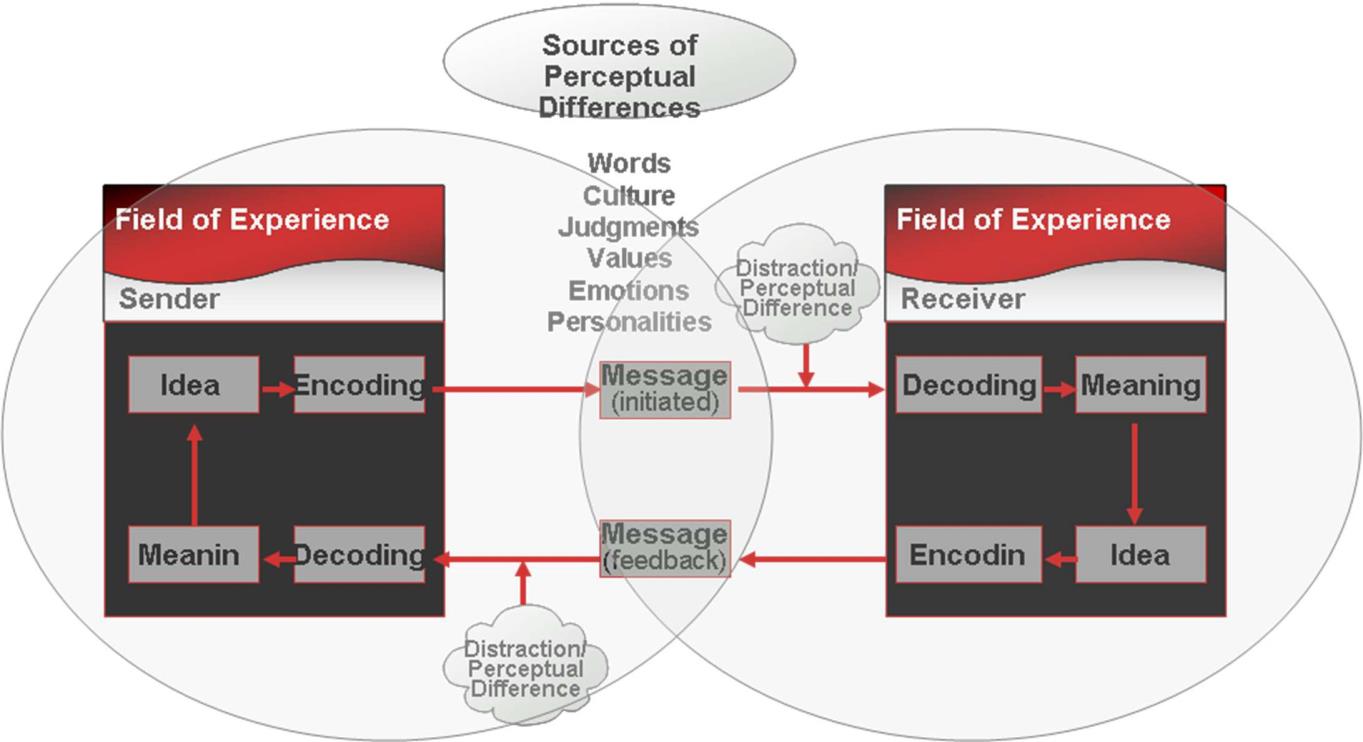
The second challenge that faces communications on a construction project is how to ensure that the different types of project communications are being communicated as per the communication channels defined for each project. This requires defining the sequence for communicating those messages as many of those communications are not as simple as “one-to-one” or “one-to-many”. Those communications need to follow a predefined workflow that details the sequence to be followed for the submission, review, and approval or rejection of those communications. The workflow should also detail how the resubmission of a returned communication happens as well as what the approval authority levels assigned to the different individuals who have a role in reviewing and approving or rejecting a project communication.
For construction projects that involve many entities with different roles for which each has a list of individuals who can take part in project communications, using manual or email communications could result in major contractual implications when there is a miscommunication. There are tens if not hundreds of communication channels that could exist on a construction project and for which they must be automated.

Almost all contract agreements address the risk of delays in responding to project communications and address the obligations that the recipient entity must avoid such delays and the entitlements that could be due for the entity sending the communication should this happen. There is always a high risk of such delays happening if there is no real-time tracking on who is holding the communication document. In addition, failing to link the project communications to their relevant project schedule activity will not give the project control team the needed alert to identify those communications that could result in delays to the project completion date.
To address the first challenge of distorted communications, the project control team should enforce the 4C’s of communications which are being Clear, Concise, Correct, and Complete. This can be achieved by having pre-defined templates for each project communication type. Those templates include all the data fields needed for complete communication. In addition, some of the data fields will have a predefined list of values to select from. This ensures that communication is clear, concise, and correct.
PMWeb is a project management information system (PMIS) that has been specifically developed for construction projects. Therefore, more of the communication templates that are common to construction projects comes ready to use in PMWeb. These include the templates for Request for Information, Transmittals, Meeting Minutes, Daily Reports, Correspondence, Submittals, Safety Events, Punch List, Potential Change Orders, Change Orders, and Progress Invoices among many others.
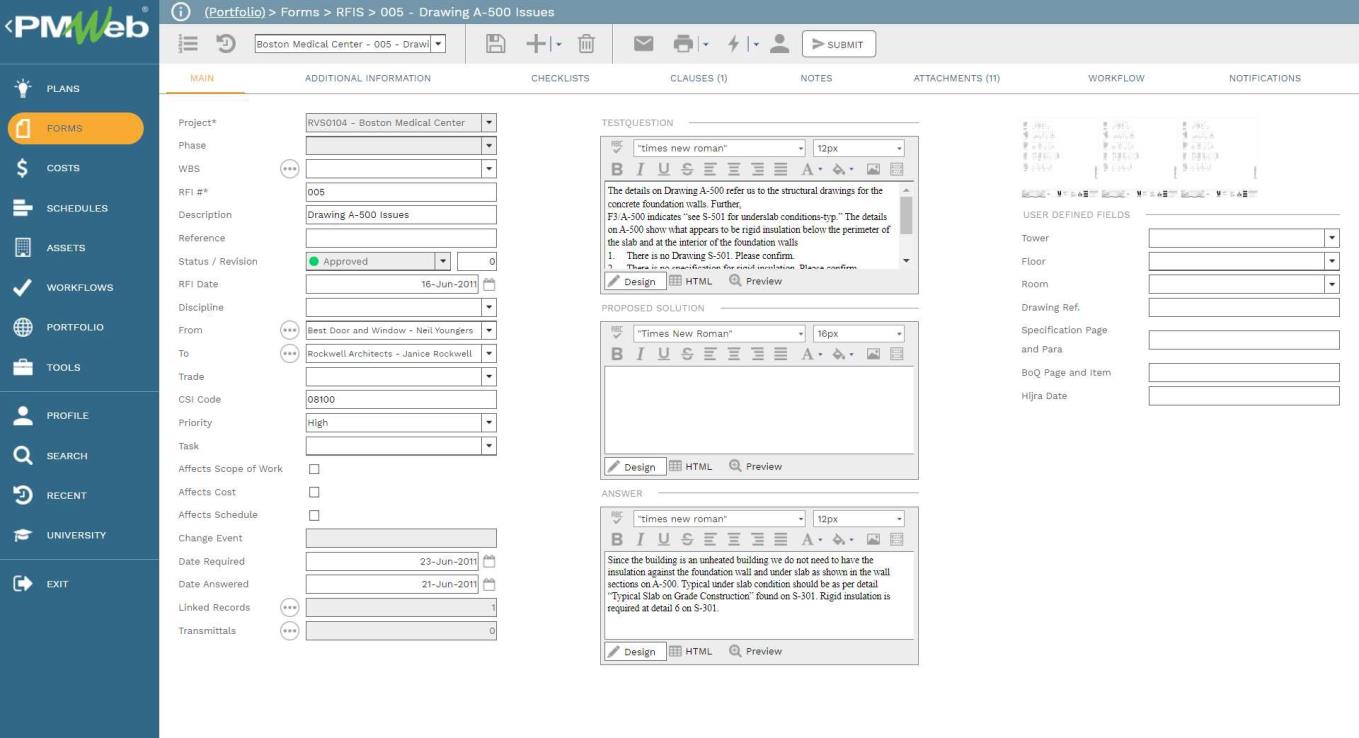
Nevertheless, one should not forget the need to develop other project communication templates that might not be common to all construction projects. For example, the communication templates for Site Work Instructions, Confirmation of Verbal Instructions, Safety Violations, Work Inspection Requests, and hundreds of other templates might need to be designed in a specific format for some construction projects. The PMWeb visual custom form builder provides the project control team with a quick zero-coding solution to create all those communication templates in any desired form or format.
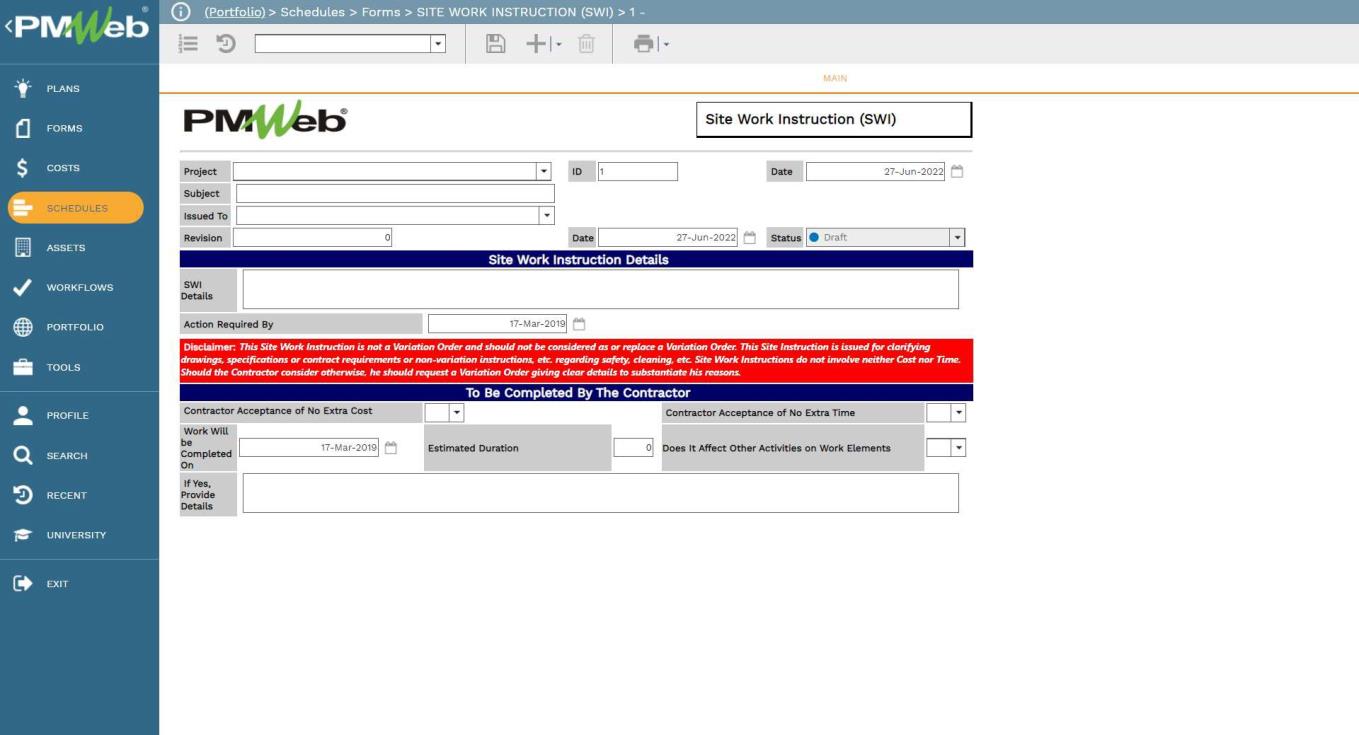
For construction projects that located in non-English speaking countries, some of the communication templates need to be created using the country’s formal communication language. This even becomes more challenging for non-Latin languages like the Arabic Language. A PMIS like PMWeb which supports all languages can be easily addressed by creating communication templates using the non-English language or a combination of both English language and the foreign language like the Arabic language.

The second challenge will be addressed by assigning a workflow for each project communication template. The project’s contract documents will define the rights and responsibilities of the different contract parties when it comes to project communications. The contract documents will also define the lines of communications to be followed on a project for which some will be considered formal communications while others will be informal communications. The formal lines of communication are those lines of communication intended to maintain proper lines of authority and responsibility for contractual responsibilities. On the other hand, informal line communications are those communications that are not related to contract documents and are not bound by lines of communication. For example, those could include discussing work with other participants who need not follow lines of communication if contract documents are not in question, encouraging a teamwork culture based on communications, and creating a friendly working environment.
Using PMWeb, the assigned workflow maps the sequence of the submission, review, and approval tasks. For each task, a role or an individual gets assigned along with the duration allotted for the task. In addition, the tasks identify the type of actions that the role or individual assigned to the task can do. Finally, the workflow embeds the approval authority rules as defined in the delegation of authority matrix as well as the different workflow scenarios that are associated with categories or disciplines associated with the communication template.
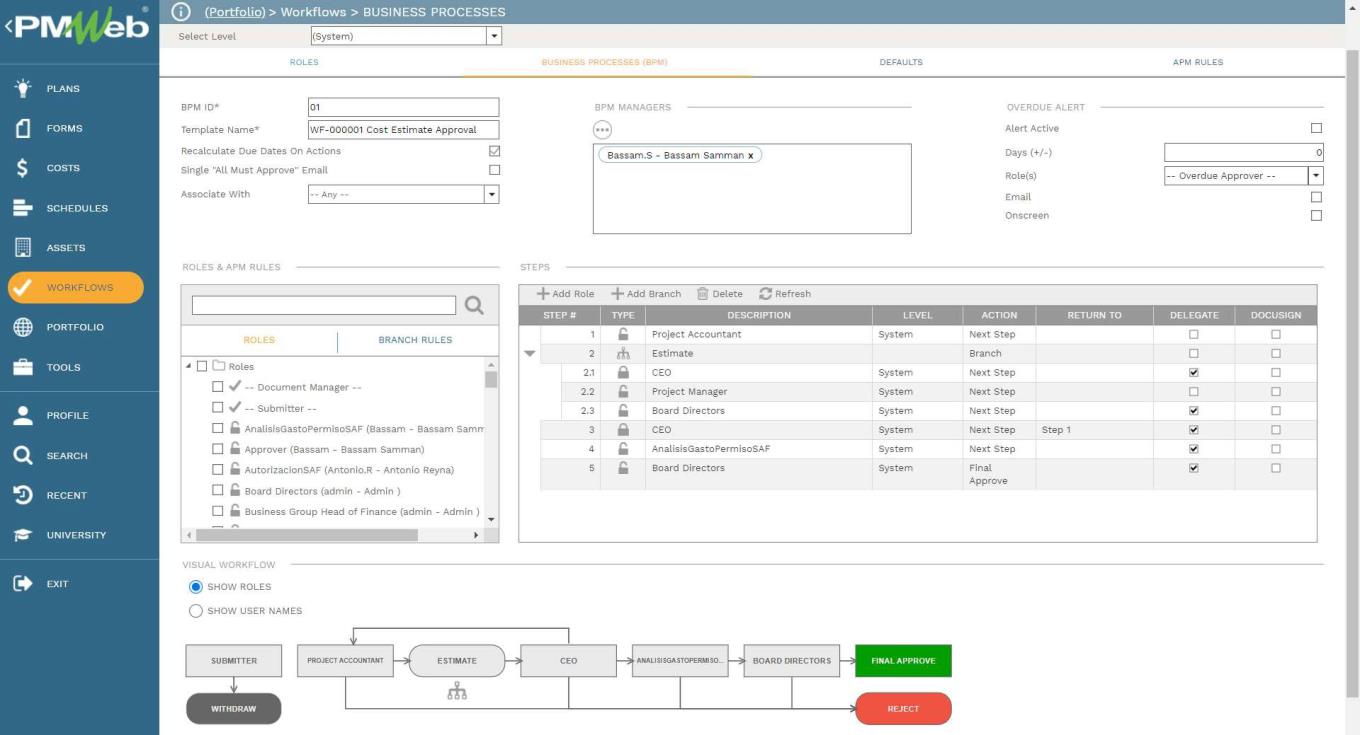
As for the third challenge of delays in project communications, a project management information system (PMIS) like PMWeb which allows linking the current project schedule to the project control system and other functions solves this issue. First, the pre-defined communication templates explained above must have a data field for the project schedule activity. This enables the entity sending the communication to identify the project schedule activity associated with this communication.
The project schedule tasks list includes the activity as well as the current start and finish dates of the activity in the schedule designated as the active schedule. In addition, it is highly recommended to have the data field for the WBS level associated with the project communication.
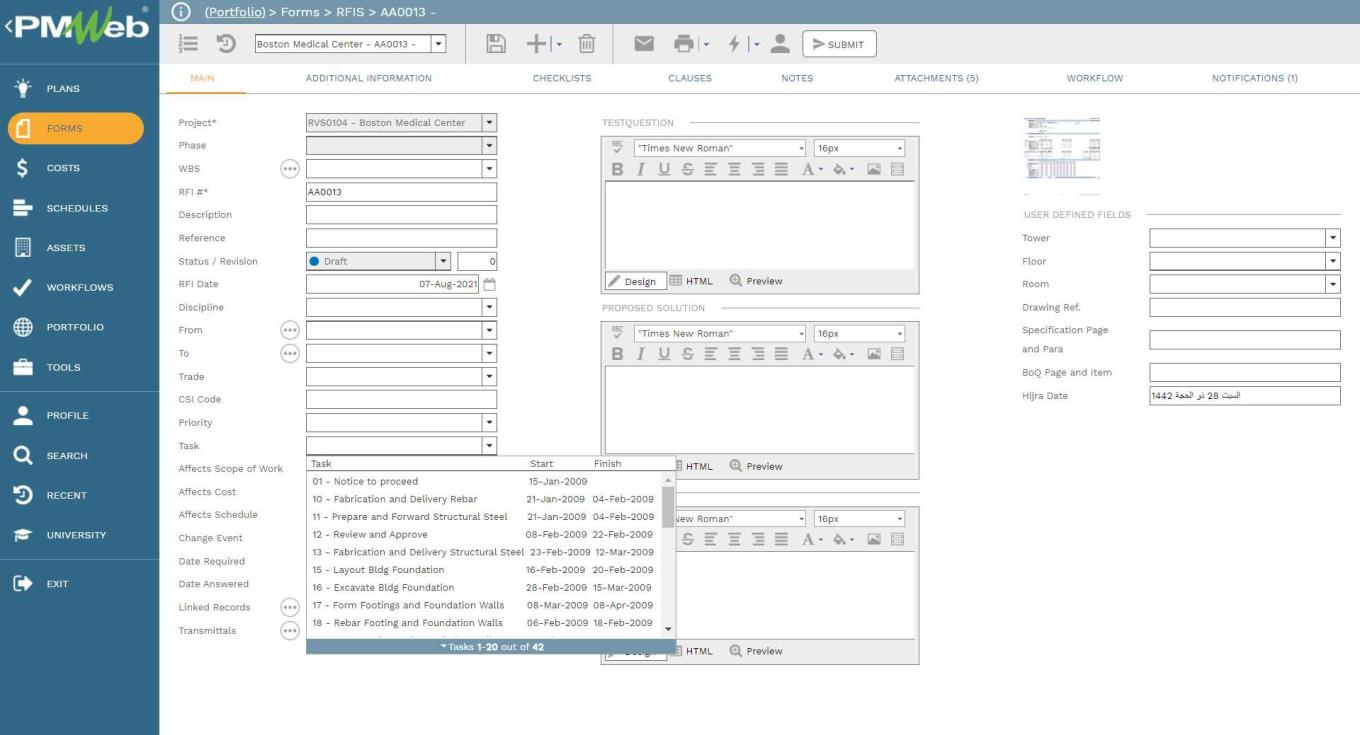
In addition, the PMWeb workflow inbox report provides a ready-to-use report that details all workflow tasks associated with project communications that have been either submitted, under review, approved, or rejected. The report provides the project control team with the real-time status of all workflow tasks for each communication record type and the user or role assigned to the task. Of course, there is also the option of creating alerts for workflows to send an email or online notifications of delayed workflow tasks.
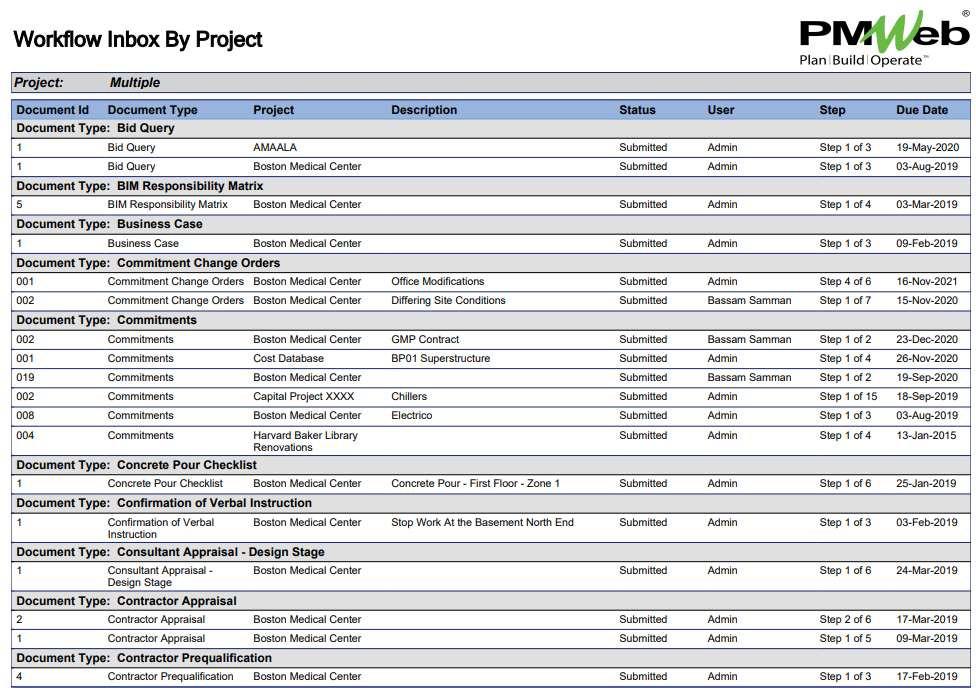
Of course, the digitalization or automation of project communications where always bring the question of its validity when there is a claim or dispute. Therefore, to formalize the acceptance of the digitalization of workflows on construction projects that uses the FIDIC form of contract, Sub-Clause 1.3 [Communications] should be amended by the Particular Conditions by adding at the end of the last paragraph the statement that says “For all intents and purposes, digital approvals by the Engineer and Contractor within the realm of an approved digitalized Project Information System shall be considered valid under the Contract and can be relied upon by the Parties as part of maintaining valid contemporary records.”
The acceptance of digital communications on construction projects only applies to claims and disputes that are subject to arbitration which follows the common law. Nevertheless, if those claims and disputes go to court then this clause will not apply as usually most courts, and in particular, those in the Middle East and North Africa (MENA) including Gulf Corporate Council (GCC) countries, follow the civil law.
Reference
The content of this article was extracted from the book titled “Let’s Transform: Enabling Digital Transformation of Capital Construction Projects Using the PMWeb Project Management Information System – 2nd Edition” written by Bassam Samman.
The book provides project owners with oversight on how technology available today can support their efforts to digitally transform the management of their projects’ portfolios. For each capital project life cycle stage, PMWeb is used to detail how the relevant project management business processes can be digitalized to enforce transparency and accountability in delivering projects. In addition, MS Power BI was used to show how the real-time, trustworthy data captured in PMWeb can be aggregated, modeled, monitored, evaluated, analyzed, and reported at anytime, anywhere using any device.



